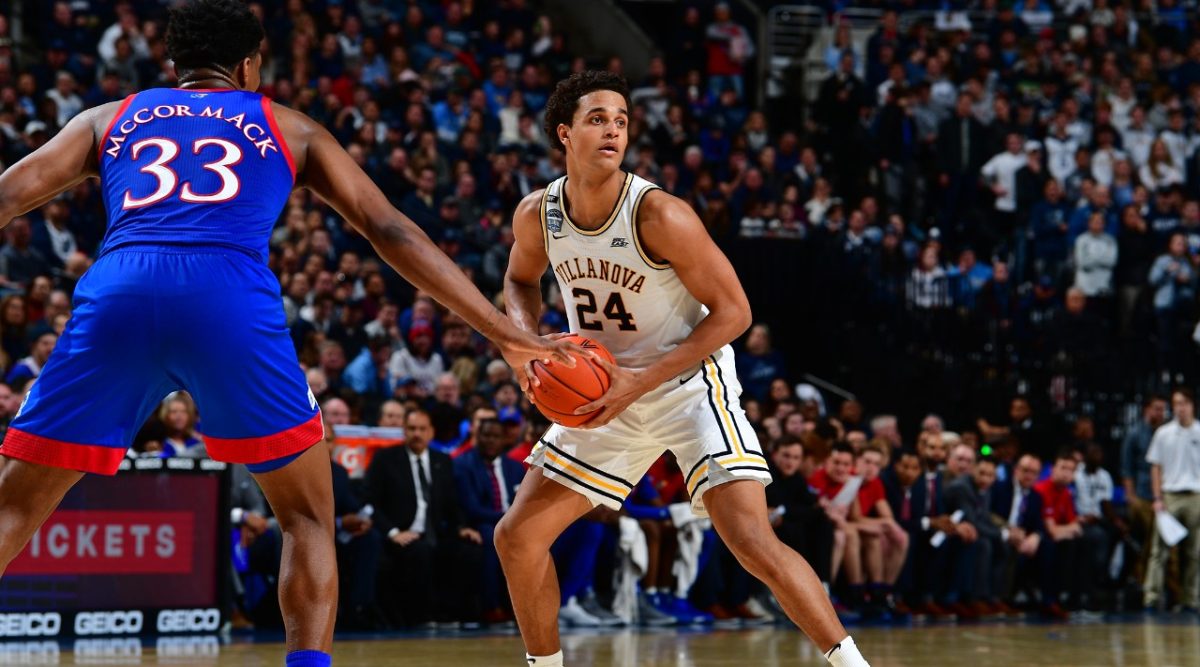Two weeks ago, Villanova’s men’s and women’s lacrosse teams kicked off their spring seasons and have already picked up a couple of Big East honors along the way. From the women’s team, junior goalie Cate Gallagher, freshman attacker/drawer Emma Verhoest and junior attacker Sydney Pappas were selected for the award. Senior attacker Matt Licata was selected for the award from the men’s team.
Although the men’s team has gone 1-2 so far, it is looking to start a winning streak after its 15-9 win against No. 20 Colgate on Saturday. As for the women’s team, it is looking to bounce back after its 18-9 loss to No.17 Navy.
Nevertheless, as these two teams start rolling into the season, there is a question still looming large: why do men’s and women’s lacrosse look so different?
Lacrosse, although popularized in the 21st century, traces its roots back hundreds of years to Native Americans. By the time a women’s iteration came around in the late 19th and early 20th century, women’s sports were still in their infancy and still revolved heavily around no contact.
With these rules, men’s and women’s lacrosse developed into two distinct styles of playing the game.
“I think [physicality] is a massive part,” Licata said. “Depending on the defense you play, they’re either big and strong, or more skill-based and a smaller player. It’s completely different in how you’re going to approach that game.”
For men’s lacrosse, physicality plays a large role, where players are required to wear helmets, pads and other protective gear because body checking is allowed.
“With more of a physical player, you can’t let them get to your hands and your body as much, or else you’re kind of too disabled to be able to throw and shoot,” Licata said. “And riding and clearing are dependent on whether you get the ball or you don’t, and whether you’re physical and can get that. If you’re not physical enough and that guy can run right by you and all you’re doing is throwing a stick in front of them, it’s a game changer.”
The women’s game, however, is more complex since it is technically non-contact. This does not mean that there is absolutely no contact, but rather, the players have to be extra cautious with physicality, especially with the new NCAA rule implementing green cards, or one-minute releasable penalties, that will be given for committing specific fouls within the thirties.
“This year has been a huge change with a new rule change,” Pappas said. “The beauty of playing attack is how when we do miss a shot or turn the ball over, we try to get the ball back so that our defenders don’t have to play defense. But this year, not being able to make that contact within the thirties has limited those opportunities to get the ball back. Now we are just a lot more cautious because we don’t want to make a foul and have our team go down a player.”
As a result of these rules, players are required to use speed and agility on offense and, more importantly, defense.
“I think something that’s similar and awesome for the both of them is that they’re very fast games,” Gallagher said. “Some people call it the fastest or on two feet, which is awesome. I think that the big difference between men and women is that there’s less protection in the women’s game, and there are more rules of what you can and can’t do. There’s a lot of rules for transition, which I think really slows down the game, which you don’t really see on the men’s side.”
But, despite these differences, the biggest factor that connects men’s and women’s lacrosse at Villanova is the competitive atmosphere and team culture of both teams.
“Whether you’re playing on the field or not, you are a game changer,” Verhoest said. “That is really important to our team, keeping that positive team culture. After winning Big East Freshman of the Week, the amount of support from my teammates has just been great. The amount of text I received was incredible. Everyone is just so happy for you when you do things like that.”
With about 45 players on each team, it can be hard to manage the fight for one of the coveted 10 or 12 spots on the field. However, for both men’s and women’s lacrosse, every player has a role on or off the field.
“Honestly, the way we interact with each other makes [the team] feel small,” Licata said. “We’re literally just a big friend group and when it comes to the game, everyone on the sideline is hyping everyone up on the field. It’s really exciting having 44 friends or so really just cheering you on from the side.”







